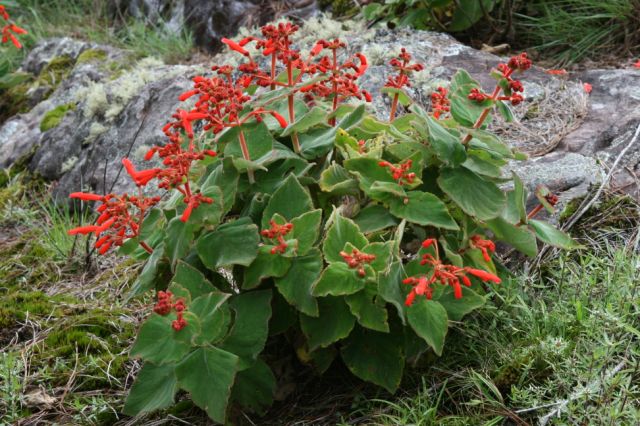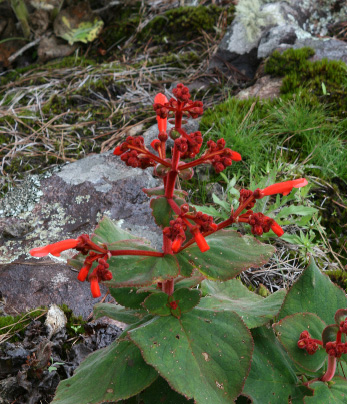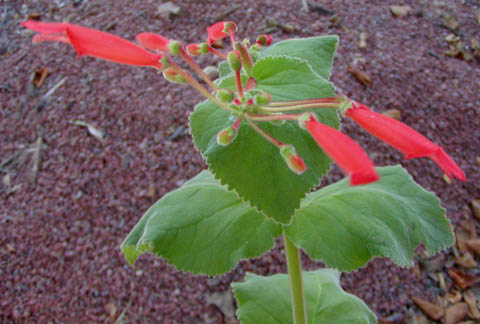I wrote this around 2006:
First: about the name. The name "magnifica" is trying too hard. This plant takes too long to bloom from seed, and it flowers late in the fall when you've lost interest. Moreover, given the name, the flowers are underwhelming, and so is the foliage. If you've seen S. cardinalis, you don't need S. magnifica.
Because of its grandiose name, I have taken to calling it Sinningia pathetica, under which name it also appears in my index. In nature, it is alleged to make an impressive display when it is in bloom.
Then Jim Roberts sent this picture to Gesneriphiles, in February 2009, of a plant growing in São Paulo state in Brazil, at a location over a mile high (near Pico do Itapeva, supposed to be one of the highest points in Brazil). Looks pretty good on location, doesn't it?

Here is a closer shot of one inflorescence.
Maybe my plants are suffering from brazilium deficiency.
My shabby plant can be seen below. There are also pictures of the tuber on a different page.
Sinningia magnifica, like its stablemate S. cardinalis, is a member of the Galea Group.
The pictures clearly show that Sinningia magnifica blooms on an extended axis. The hairy red stalks and peduncles contribute to a fine display.

